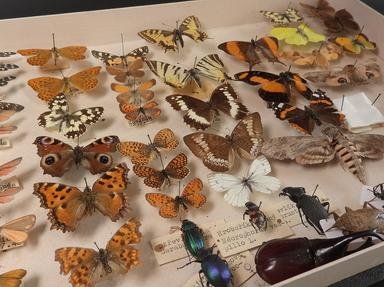Quiz Answer Key and Fun Facts
1. Once ladybugs (or ladybird beetles) were the delightful, safe and friendly insects of childhood. Even the source of the name given to these lovely creatures testified to their perceived beneficence. To which lady did the name "ladybug" originally refer?
2. Ladybug, ladybug
Fly away home
Your house is on fire
Your children do roam
Does this ancient English verse indicate that ladybugs were an invasive pest even in Merry Old England?
3. An unwholesome cousin of native ladybugs with the ironic name "Harmonia axyridis" is now replacing the wholesome ladybug of the Middle Ages in England, Canada and the United States. On what continent did this distasteful pest originate?
4. In a misguided attempt to control aphids, from 1979 to the 1990s, the U.S. Department of Agriculture released the problematic Harmonia axyridis ladybird species on multiple occasions in which American state(s)?
5. According to "uknature.co.uk", the hideous harlequin ladybird beetle Harmonia axyridis did not reach British soil until 2004. Is there reason to believe this invasive, exotic ladybug made its way to Britain on its own?
6. The exotic species of ladybug imported into the US to control agricultural pests has proven to be a voracious predator - but not just of aphids. For the larvae of which other species is Harmonia axyridis a pitiless predator in both North America and England?
7. Why should well-meaning American, Canadian and British parents no longer place a ladybug in the palm of a delighted, expectant toddler?
8. Which native North American species is a natural predator of the exotic and predatory ladybug, Harmonia axyridis?
9. Which of the following potential problems has the University of Nebraska NOT raised as a possible result of Harmonia axyridis ladybug infestation?
10. One can hope that some time will pass before Harmonia axyridis has replaced all of the lovable Anglo-American lady bugs. Perhaps assisted by an informed parent, some children may still have the delight of holding an Anglo-Saxon bred ladybug in a trembling hand. Of the following, which is the most distinctive feature of Harmonia axyridis?
Source: Author
uglybird
This quiz was reviewed by FunTrivia editor
crisw before going online.
Any errors found in FunTrivia content are routinely corrected through our feedback system.

